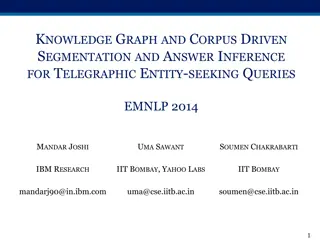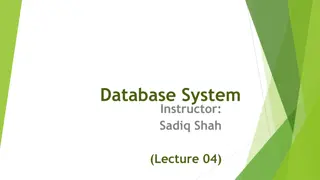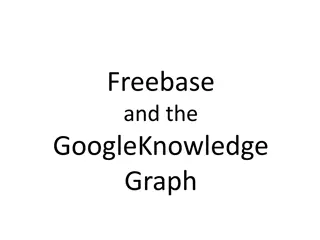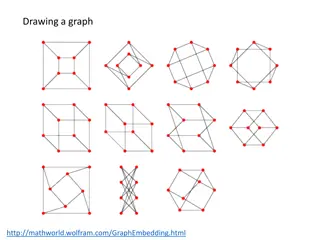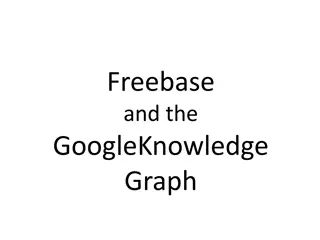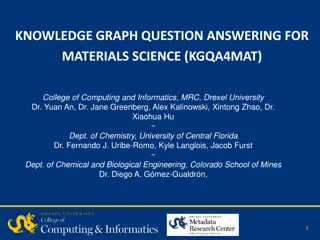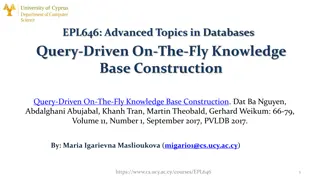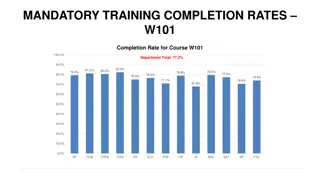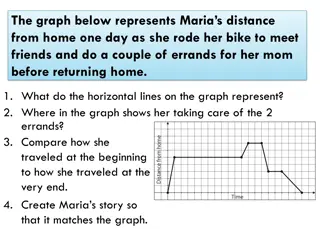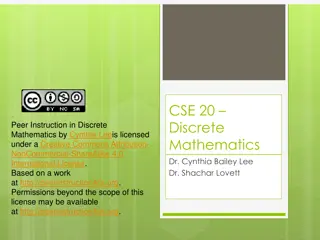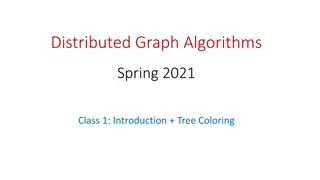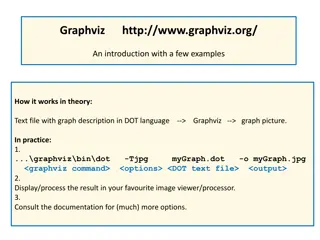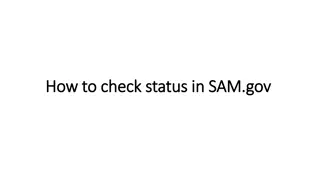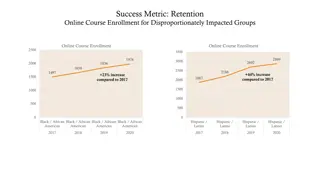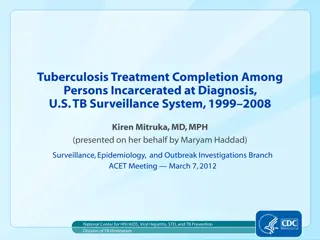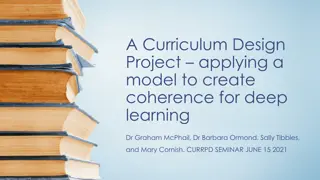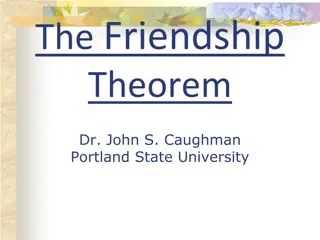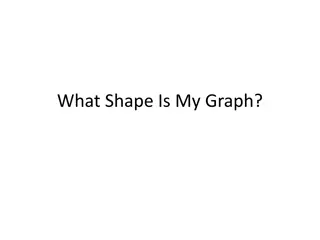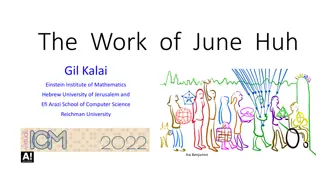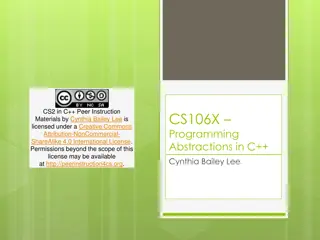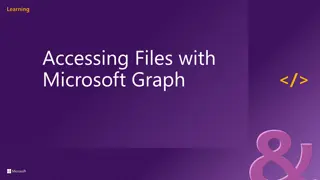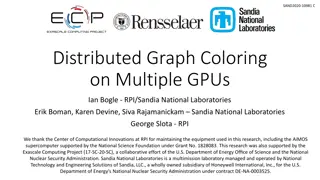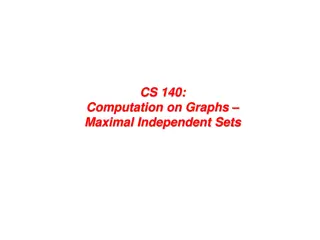Knowledge Graph Completion Model Integrating Entity Description and Network Structure at EEKE2021
EEKE2021 presented a model that integrates entity description and network structure to enhance knowledge graph completion (KGC). The model aims to predict missing information in the graph by considering various sources of data beyond the traditional triple structure. It discusses related work, research questions, methodology, experiments, and conclusions in the context of KGC models.
Download Presentation

Please find below an Image/Link to download the presentation.
The content on the website is provided AS IS for your information and personal use only. It may not be sold, licensed, or shared on other websites without obtaining consent from the author. Download presentation by click this link. If you encounter any issues during the download, it is possible that the publisher has removed the file from their server.
E N D
Presentation Transcript
EEKE2021 A knowledge graph completion model integrating entity description and network structure Chuanming Yu1, Zhengang Zhang1, Lu An2 1 Zhongnan University of Economics and Law , Wuhan 2 Wuhan University, Wuhan Presenter Chuanming Yu
EEKE2021 Introduction Related work Research questions and the proposed method CONTENTS Experiments and discussions Conclusion
EEKE2021 PART 01 Introduction
EEKE2021 1. Introduction Knowledge graph completion knowledge graph completion (KGC) aims to predict the missing information in the knowledge graph, that is, the prediction of tail entities under the premise of given head entity and relationships, or the prediction of head entity under the premise of given tail entity and relationships.
EEKE2021 1. Introduction It is worth noting that most KGC models only use the triple structure in the knowledge graph when training entity and relationship representation, while many rich information from other sources such as entity description, attributes, etc., has been ignored.
EEKE2021 PART 02 Related Work
EEKE2021 2. Related Work According to the information used in the KGC models, we divide KGC into two categories: The structure-based model TransE(Bordes, Usunier, Garcia-Duran, Weston, and Yakhnenko, 2013) TransH Wang, Zhang, Feng, and Chen ,2014 ) TransR (Lin, Liu, Sun, Liu, and Zhu,2015) ComplEx (Trouillon, Welbl, Riedel, Gaussier, and Bouchard, 2016) TuckER (Bala evi , Allen, and Hospedales, 2019) ConvE (Dettmers, Minervini, Stenetorp, and Riedel, 2018) ConvR (Jiang, Wang, and Wang, 2019) HypER (Bala evi , Allen, and Hospedales, 2019)
EEKE2021 2. Related Work The KGC model integrating external information DKRL (Xie, Liu, Jia, Luan, and Sun, 2016) EDGE (Zhou, Wang, and Jiang, 2019) KG-BERT (Yao, Mao, and Luo, 2019)
EEKE2021 PART 03 Research questions and the proposed method
EEKE2021 3. Research questions and the proposed method In this study, we propose a novel Entity Description Augmented Knowledge Graph Completion (EDA-KGC) model, and investigate the following research questions on this basis. 1 Compared with the traditional KGC models and the ones that incorporate external information, does the proposed model have better effect in the KGC task? 2 For the KGC model integrating entity description and network structure, what are the key influencing factors?
EEKE2021 3. Research questions and the proposed method The proposed framework (EDA-KGC): Representation module Deep interaction module Reasoning module
EEKE2021 PART 04 Experiments and Discussions
EEKE2021 4. Experiments and Results Dataset To inverstigate the research questions proposed in this paper, four datasets are selected i.e., FB15K, FB15K-237, WN18 and WN18RR.
EEKE2021 4. Experiments and Results The experimental results of the comparative study
EEKE2021 4. Experiments and Results The experimental results of the comparative study
EEKE2021 4. Experiments and Results The influence of different embeddings on the performance
EEKE2021 4. Experiments and Results The influence of different model architectures on the performance
EEKE2021 4. Experiments and Results The influence of different model architectures on the performance
EEKE2021 PART 06 Conclusion
EEKE2021 6. Conclusion Conclusion We propose a novel model, namely Entity Description Augmented Knowledge Graph Completion (EDA-KGC), which fully leverages both the entity description and the network structure, and solve the problem of knowledge graph completion with a high generalization ability among different datasets. We conduct intensive experiments to evaluate the performance of the proposed EAD-KGC model on four datasets, namely FB15K, WN18, FB15K237, and WN18RR. The experimental results demonstrate that our approach outperforms most of the state-of-the-art methods.
EEKE2021 6. Conclusion Future work We will further explore how to enhance knowledge graph representation through multimodal information such as images, so as to further improve the effect of knowledge graph completion task.
EEKE2021 THANKS yucm@zuel.edu.cn yuchuanming2003@126.com








